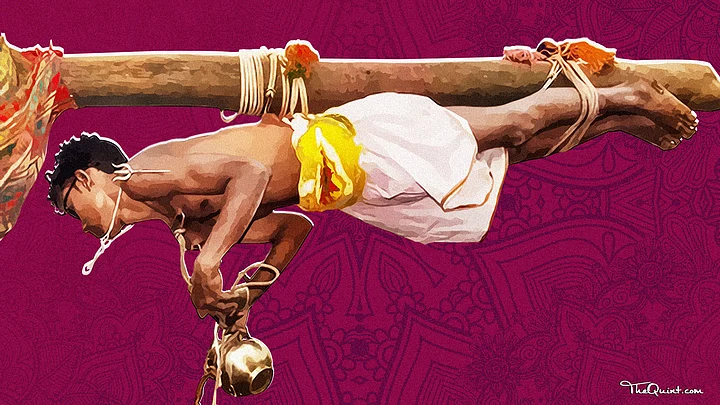Ahead of Pongal in January, Jallikattu – Tamil Nadu’s bull-taming sport – triggered a flurry of heated debate and violent protests over the Supreme Court’s decision to ban the sport. The matter didn’t quite calm down even after the festival, simply because the practice is seen from different points of view.
In fact, this is the thing with traditions and cultural practices. What might be a way of life, or a deeply entrenched part of one culture, could seem absolutely unbelievable (sometimes even bizarre) to someone else.
Perhaps this is what led to all the tension in Tamil Nadu. But hold on, Jallikattu is not alone. There are a number of practices that could evoke strong reactions from “outsiders”.
Baby Tossing
In a predominantly south Indian tradition, infants are tossed from a temple's building to be caught in a cloth below. The ritual usually takes place in December, and is supposed to bring good luck to infants.
The Bani Festival
Celebrated on Dussehra, devotees assemble in Devaragattu Temple in Andhra Pradesh’s Kurnool to strike each other on the head with lathis. The practice commemorates the killing of a demon by Mala-Malleshwara (Shiva).
The Hindu Thaipusam Festival
To celebrate the birth of Lord Murugan and his killing of Soorapadman with a spear, devotees pierce their body with sharp objects such as spears and hooks.
Rolling Over Food Leftovers
The Made Snana ritual, observed in temples of Tamil Nadu and Karnataka, witnesses devotees (usually the lower castes) rolling on food leftovers of Brahmans and upper castes. It is believed that the saliva of Brahmins has healing powers.
Cow Trampling Ritual
In villages around Ujjain in Madhya Pradesh, just a day after Diwali, men can be seen lying on the floors waiting to be trampled by cows. The tradition is practised because it supposedly brings good luck.
Charak Puja
It is a Hindu festival celebrated on 14 April in West Bengal and parts of Bangladesh to please Lord Shiva. The devotees, to bring themselves good luck, walk on hot embers and pierce their bodies with a trishul.
Animal Weddings
In this predominantly rural phenomenon, animal weddings are performed, following all Hindu rituals, to please the rain Gods. In Karnataka, donkey weddings have been performed whereas in Assam and Maharashtra, frog weddings have been reported.
Garudan Thookam
Garudan Thookam is performed every year at Elamkavu Devi Temple in Vaikom and Airapuram Temple in Perumbavoor to please Goddess Kali. The devotees are dressed like eagles and then hung from a shaft.
Agni Keli
The ritual witnesses hundreds of devotees throwing burning palm fronds at each other. The festival is observed at the Kateel Durgaparameshwari temple.
Smashing Coconuts on Head
The Aadi festival in Tamil Nadu witnesses thousands of devotees allowing priests to smash coconuts on their heads. The ritual is supposed to bring good luck, wealth and peace in the life of devotees.
Human-Non Human Wedding
In Indian culture, if a girl is maanglik, she is supposed to marry a dog or a peepal tree to get rid of the 'dosh'. By doing this, the girl sheds the evil curse, which she would otherwise pass on to her husband.
Not just India, a number of traditions are still practised around the world that may or may not appeal to everyone’s sensibility. Here are a few:
Blood Fiestas
The blood fiesta, carried out in Spain, involves inflicting severe pain on animals, particularly the bull. The animal is tortured by covering it with burning wax and poking it with knives and spears. Not just this, the killers also parade the animal's body parts and the chief killer is even allowed to eat the bull's testicle.
Polterabend
‘Polterabend’ is a German wedding custom in which guests break cutlery before the wedding night. The bride and groom are required to clean the mess which is supposed to bring them 'good luck'. This also shows the guests that the couple will be great as a team.
Cock-Fighting
Cock-fighting is another practice that inflicts cruelty on animals. Roosters are placed in a ring with blades attached to their feet and are made to fight for the amusement of the audience.
Eating Placenta
Through maternal placentophagy, the mother eats her own placenta after birth, to absorb hormones and other nutrients. The practice is common among Polynesian women in Hawaii, but is also performed elsewhere.
(At The Quint, we question everything. Play an active role in shaping our journalism by becoming a member today.)
